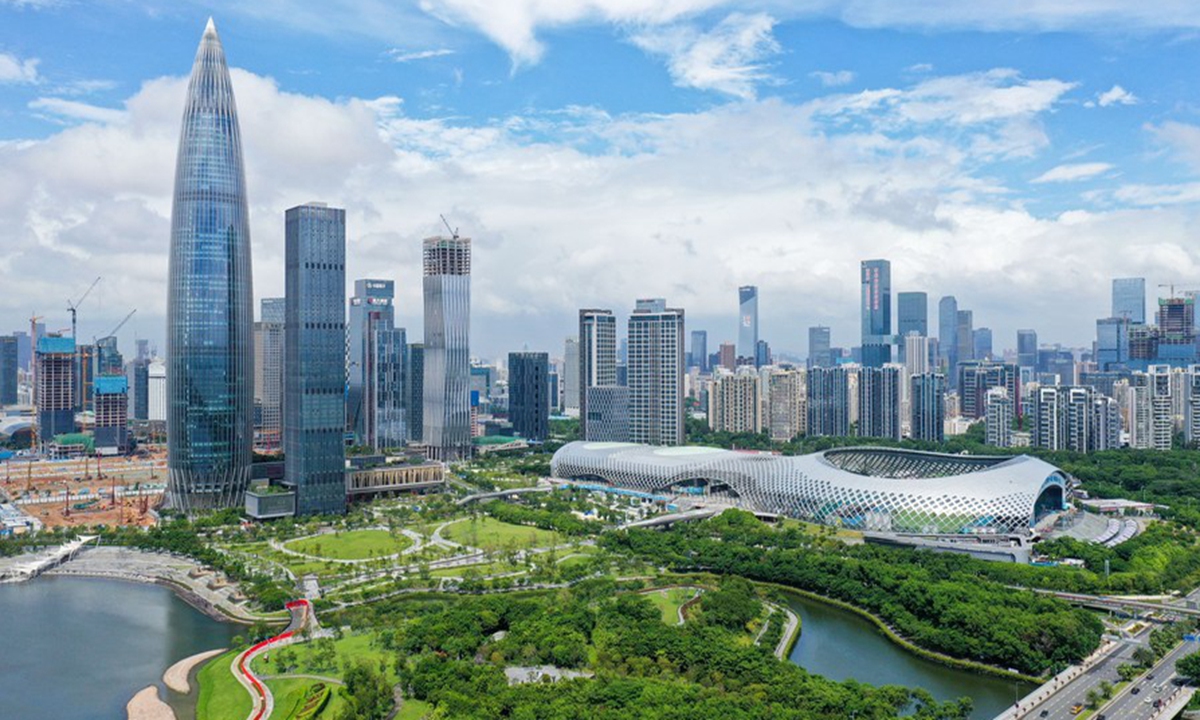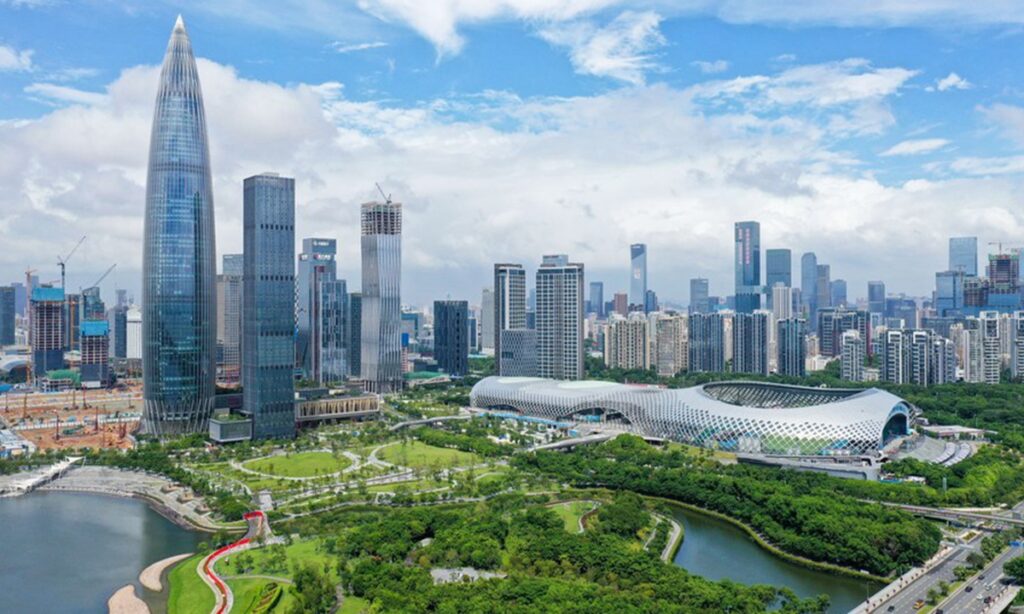
Photo: Xinhua News Agency
China's economy has transitioned to a high-quality development stage and is currently at a critical period of transforming the economic development model, optimizing the economic structure and changing the growth momentum.
As the world's second-largest economy and largest manufacturing country, China's economy has undergone transformation, overcome obstacles, weather the waves, form sustainable endogenous growth momentum, and build strong resilience. There is.
The extraordinary resilience of China's economy is reflected not only in its ability to withstand shocks but also in its ability to regenerate. The economy achieves reasonable growth while also ensuring quality improvement.
sustained resilience
In terms of size, after experiencing the impact of the COVID-19 pandemic, China's economic growth has shown a strong recovery, with the total economic value increasing from 98.65 trillion yuan ($13.9 trillion) in 2019 to 2023. has grown to more than 126 trillion yuan. In 2020, China became the only major economy in the world to achieve positive economic growth, making a major contribution to global economic stability and growth amid the pandemic.
In terms of quality, China's digital economy is thriving, with new industries, new forms, and new models reshaping the core of China's economy. From “Made in China” to “China Innovation” and now “China Intelligent Manufacturing”, it has become a shining symbol of high-quality development in China's economy.
From a demand perspective, consumption has become the main driver of economic growth, and its contribution to economic growth is continuously increasing. Although investment contributions have seen some decline, the direction and structure of expenditures is constantly optimized, focusing on key areas related to national well-being and long-term development. This not only plays a role in countercyclical adjustment, but also has a significant positive effect on the macroeconomic balance.
On the supply side, through deepening structural reforms, China is gradually transitioning from traditional manufacturing to high-value-added high-tech industries. Key areas such as the digital economy and artificial intelligence (AI) are growing rapidly, leading to increased investment in green and low-carbon initiatives leading to the rise of green industries. In 2023, China will overtake Japan for the first time as the world's largest automobile exporter through the promotion of new energy vehicles.
China's economy is undergoing a transition from old growth engines to new growth engines. Guided by the principle of establishing the new before abolishing the old, China insists on using development as a means to solve new problems through the process. This has resulted in the revival of traditional industries under the leadership of new industries and technologies.
In 2022, the added value of China's “Three New” economy, which is a collection of economic activities centered on new industries, new business formats, and new business models, will exceed 21 trillion yuan, and the Chinese economy is starting to get back on track. It is about replacing traditional factor-driven and investment-driven growth with innovation-driven development.
new source of power
Facing unprecedented major changes and accelerating evolution in the world, China's economy, with its ultra-large domestic market based on a population of 1.4 billion, still has strong development potential. Even in the face of numerous risks and challenges, China's economy will continue to unleash its potential as long as it remains committed to promoting quality transformation and leverages the advantages of its vast population in terms of markets and innovation. Can be done.
The new momentum in development stems from the urgent need to drive high-quality development. The increasing demands of people for a better life are leading to the emergence of new individualized, diversified and customized needs. China leverages the diverse and unique advantages of technological innovation to overcome the limitations of diminishing returns due to traditional factors such as population and capital. By maximizing the potential of traditional elements, broadening their range, and integrating innovative elements, China's economy can confidently and successfully overcome challenges.
New momentum develops from the enormous combined power of millions of business entities. From the perspective of market size and human resource stock, whether large enterprises or tens of millions of small and medium-sized enterprises and micro enterprises, they are all important driving forces for the development of China's economy. Both independent innovation and integrated innovation cannot be achieved without China's huge market scale, vast human capital, and rich application scenarios.
New momentum developments emerge from the innovative impetus generated by new industrialization. New industrialization incorporates requirements such as informatization, digitalization, and effective use of human resources. The innovative impetus that new industrialization fosters is important. The classification of data as a factor of production and the continued emergence of a high-quality workforce have driven a series of changes in production organization, employment patterns, business models, and more. This will help foster emerging and future industries and strategically support China's economic development.
The development of new momentum comes from the powerful synergies formed by macroeconomic policies. China adheres to building a first-class business environment, treating all types of business entities equally, promoting a fair competitive market environment, and promoting the growth of the private economy. Supported by the strong magnetic force of the market, the warm influence of policies that enhance market confidence, and the visible good policies and excellent services, China's private economy is ushering in new opportunities for development.
continuous momentum
The new momentum of China's economy has strong potential and driving force, especially exploring opportunities for opening up, leveraging human resources for dividends, exploring new opportunities for new industrialization, and capturing the momentum of technological innovation. etc.
Anti-globalization sentiment has been growing in Western countries in recent years. However, China still firmly advocates comprehensive, multi-layered and wide-ranging opening-up, and is deeply involved in international scientific and economic cooperation and competition. China has consistently strengthened its ability to coordinate and effectively utilize a wide range of domestic and international resources. By accepting a high level of openness, China can broaden its horizons for economic development.
Although aging is a challenge, having a rich human resources base is a major advantage, and each individual becomes a source of innovation. By continuously increasing investment in education and seizing the opportunities presented by new waves of technological revolution and industrial transformation, China can continue to effectively utilize its human resources and generate a demographic dividend.
New industrialization is the key to accelerating the construction of an innovative country and forming new high-quality productive forces, and is an important means for China to seize technological heights in the competition of a new round of technological revolution. It is. Digitalization has reshaped the essential logic of China's industrial development, as digital technologies have been applied to various production and everyday settings. New opportunities brought about by the start of new industrialization will not only help comprehensively increase the level of modernization of the industrial system, but also ensure that high-quality supplies always remain at the forefront of the world.
After years of exploration, China has established an innovative system that combines top-down efforts led by the government and bottom-up efforts led by businesses. Governments are playing an important role from the top down by increasing support for basic, applied basic and cutting-edge research. Companies play an important role from the bottom up by strengthening their positions in technological innovation. As the bearers of technological innovation, companies collaborate with universities, research institutes, etc., promote the construction of innovation infrastructure and open innovation platforms through industry-academia research collaboration, and contribute to maximizing the innovation vitality of society as a whole.
Yuan Lei is deputy director of the Economic Research Institute of the Chinese Academy of Social Sciences (CASS). Zhang Peng is an associate researcher at the CASS Institute of Economic Research. bizopinion@globaltimes.com.cn



